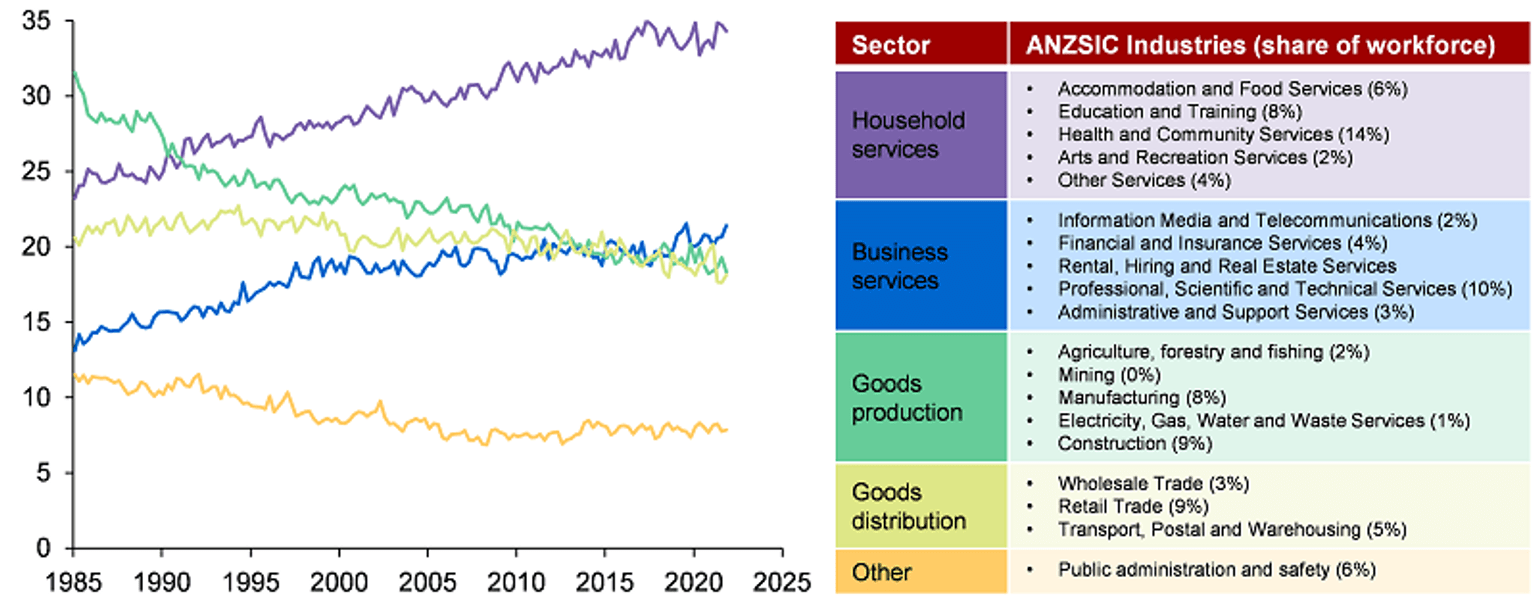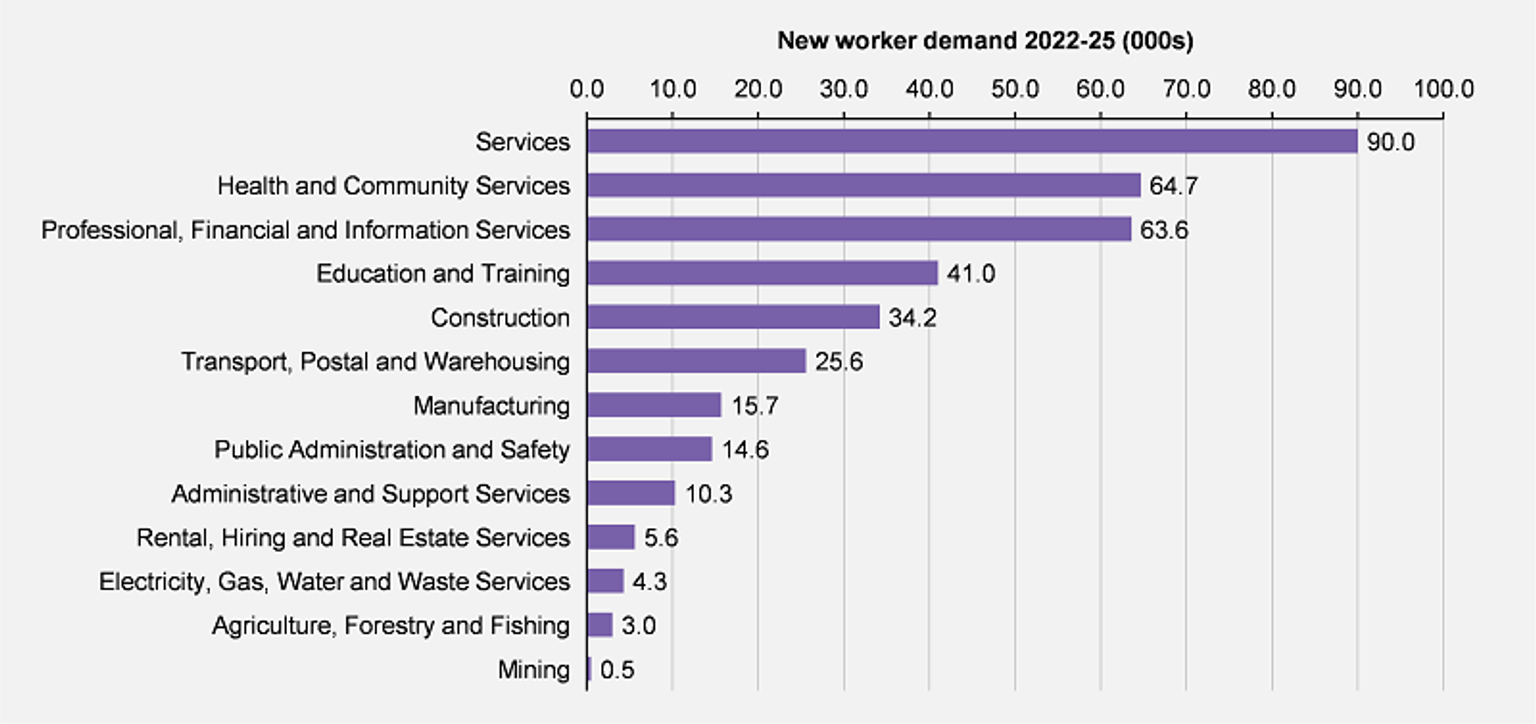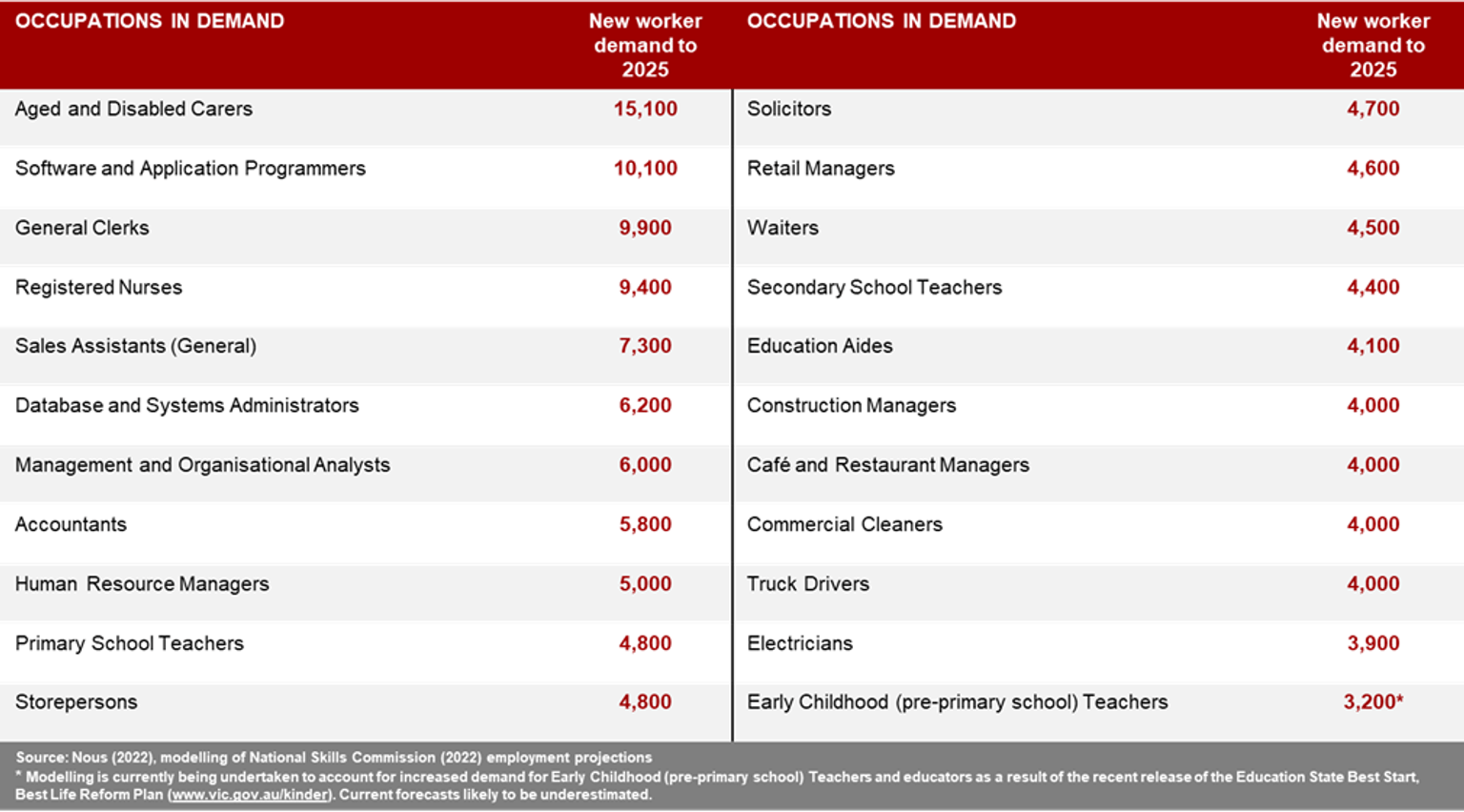Victoria’s economy is growing and rebounding strongly from the pandemic, creating opportunities for skilled workers across all industries, regions and occupations. Demand is being driven by existing vacancies, new jobs and replacing retiring workers. Collectively, 373,000 new workers are forecast to be needed in Victoria by 2025.
Victoria’s economy is large and diverse
The Victorian labour market comprises around 3.5 million people – an increase of more than 700,000 in the last decade. Over this period, unemployment has reduced from 5.5% to rates around 4% and participation has grown from 64.8% to around 67%.
The largest sectors by employment are concentrated in industries that mostly serve local households and businesses (refer Figure 1). Construction, manufacturing, wholesale trade and public administration are also large sources of employment. Health and community services, professional services and retail are the largest industries by employment.
Regional communities make an important contribution to Victoria’s economy, accounting for over a fifth of the State’s total workforce. This workforce underpins the state’s performance in primary industries, providing the resources, food and fibre to sustain our populations, and contributing high-value exports through manufacturing and transport hubs. Regional landmarks draw domestic and international visitors to Victoria, supported by a strong visitor economy workforce. A growing proportion of the regional workforce is focused on providing the services and infrastructure that are critical to serve our regional communities, which are primed for strong growth following the pandemic.
373,000 new workers are needed in Victoria by 2025
An estimated 373,000 additional workers are forecast to be needed by 20253 to meet demand from new jobs and replace retiring workers, with 82,400 needed to meet regional workforce demands (including replacing retirements and new jobs created).
While all industries have sectors with forecast growth, those driven by changes in population such as health and community services face significant growth with an estimated 64,700 workers needed. Food and accommodation, retail, wholesale trade and arts and recreation services and other services forecast an additional 89,000 workers and education and training will see demand grow by 41,000 workers by 2025 (refer Figure 2). Further information on employment growth is provided in Appendix 1.
Employment growth is forecast across regional Victoria with concentrations in certain select industries. Approximately 74% of Victoria’s agriculture, forestry and fishing, 44% of mining, 26% of administrative and support services and 26% of construction industry workforces are based in regional Victoria. Substantial employment occurs in all other industries, including manufacturing hubs in Wodonga, Kerang, Portland or Bendigo. Tourism along the Surf Coast and Great Ocean Road or Victorian High Country; energy generation and transmission across Gippsland, Mallee and Great South Coast; and regional health care and community services and education and training are priorities. Further information on employment growth expected in Victoria’s regions is available in Appendix 2.
Occupations are in demand across all Victorian industries
Employers in all industries are looking for workers in key occupations (refer Figure 3 for a cross section of occupations from the Victorian economy). These ‘occupations in demand’ show the total number of new workers needed by 2025 accounting for anticipated growth in new jobs and those needed to replace retirees.
In demand occupations are distributed across every industry. High growth industries are experiencing the largest demand, for example, in the services industry there are 151 occupations such as waiters, sales assistants and café and restaurant managers with demand for 100 or more new workers by 2025. In professional, financial and information services there are 102 occupations with demand for 100 or more new workers (for example, software and applications programmers, solicitors, and accountants) and in health and community services there are 70 occupations (for example, aged and disabled carers, registered nurses and nursing support and personal care workers).
There are also occupations that are critical for the functioning of industries and regions but require fewer workers (such as saw technicians, metal casters and harbor pilots). While critical, the small numbers of workers in these occupations makes it challenging for training to be available or financially sustainable for providers to deliver. This can impact the viability of some industries and jobs in the local communities that rely on them.
*Modelling is currently being undertaken to account for increased demand for early childhood (pre-primary school) teachers and educators as a result of the recent release of the Education State Best Start, Best Life Reform Plan (www.vic.gov.au/kinder). Current forecasts likely to be underestimated.
References
2 Australian Bureau of Statistics 2022, Labour Force, Australia, Detailed, cat.no.6291.0.55.001, reference period March 2022, released April 2022, ABS, Canberra
3 Nous (2022), modelling of National Skills Commission (2022) Employment Projections 2022–2025
Updated


